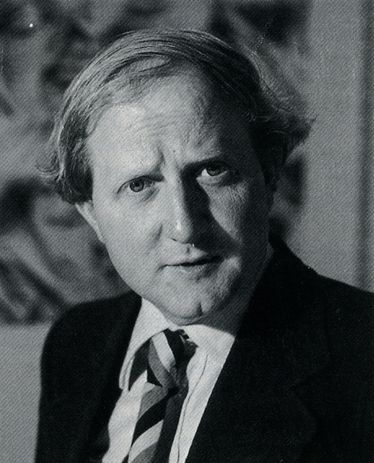Architecture Awards – Quo Vadis?

Don Bailey.
The National Architecture Awards are now in the fifth year of operation. In terms of resource allocation, the awards presently constitute the largest single Australian Institute of Architects programme intended to focus community attention on architecture, and architectural excellence. Through attainment of wide media exposure regionally and nationally, the awards programme is intended to promote public participation in a celebration of architecture.
No doubt a very large proportion of the public remain disinterested in such overtures and retain a very cynical view of the whole awards process. The public generally takes the view that awards are a self-congratulatory process – a kind of corporate narcissism – whereby architects are being seen to pontificate on what is good architecture, without apparent concern for the views of the average person. This is not unlike the well-known jibe at the arrogance of the medical profession – “The operation was a resounding success. Incidentally, the patient died!”
At the professional level, the awards system is intended to sharpen critical judgement, promote debate of differing ideologies, and throw into relief the current state of the art.
A section of the profession also shares a very cynical view of the awards process. This group takes the view that the system is designed to glorify the work of a vocal minority of practitioners, and would have us believe that the jury appointments tend to perpetuate certain fashions within architecture and do little good in setting high standards in the fullest sense of architectural practice, for the profession to live up to.
Both of these views have validity and much of the blame can be attributed to architects themselves.
It is interesting to note an excerpt from the editorial of the May 1985 issue of Architecture Australia: “The reason that the media treats new buildings as if they were superficial works of art is because their architects talk about them as if they were superficial works of art.” And “It is an educated public, not an interested one, that we need to help defend architecture from the many destructive forces now working against it.”
The architecture awards programme is a part, but only a part, of a very much larger ongoing campaign by the RAIA to educate the public in the design process generally, with all its complexities and difficulties. This is being addressed in a number of areas such as architects in schools, curriculum development, Government awareness programmes, conventions, seminars, competitions, bookshops, monographs, speaker’ kits, city guides, Archidata and much more. In the process, architects themselves are being educated and re-educated in community aspirations for the built environment.
In the awards programme there are indications of increasing recognition of the greater social concerns of recent years and of the need to involve participation by the client public and the users of architecture in the design process and decisions making.
Bryce Mortlock, in his 1980 Hook Address made some cogent observations: “If we want our services used more widely, let us make them as attractive as possible by their sheer excellence, in those areas where excellence can be judged objectively,” and “The functional details are the very foundation of architectural excellence, and let us never forget it.”
In this the fifth year of conducting the awards programme, we now have a universally adopted format for submissions, covering such matters as suitability of the solution to the client’s brief, functional efficiency of the building, and care and examination of all matters relevant to the project, including environmental, energy and maintenance factors.
This will enable the respective juries to make relative objective assessments in addition to the usual more subjective assessments of current aesthetic appeal, this avoiding many of the claims of superficiality in award reporting in the popular press.
The criteria might well be extended in the future to include the extent to which the client, or end user, was involved in the selection of design options. With clients taking a greater degree of interest and responsibility in this area, the architect as facilitator would doubtless welcome a resulting commensurate lessening of liability.
In using the awards system as a public education device one difficulty will, it seems, always remain. It is to do with chalk and cheese. There will forever be essential differences in size and nature of projects within a general category, and account of this much be taken. But weightings of assessments will tend to be influenced in relation to a building’s purpose.
The sports complex or kindergarten will usually enjoy widespread public appeal. On the other hand, though hopefully architecturally excellent in every respect, a maximum security prison, in an increasingly crime ridden world, is by nature a basically repugnant institution. The public can be forgiven for not celebrating enthusiastically, architecture to resolve society’s ills.
While the profession services, attainment of excellence in architecture should be the paramount quest for the Institute and its members. It will be manifested in all buildings, great and small regardless of purpose. Wherever, in addition to skill and care, a holistic rather than superficial treatment of the aspirations of society and deep understanding of the human condition has been of primary concern.
Our charge is to bring the community into our confidence. The awards programme is one of the means to achieving this objective. May it never be seen as a vehicle for encouraging and perpetuating a clique of architectural prima donnas but rather a mechanism to portray architects as quietly competent facilitators.
Don Bailey
Executive Director RAIA
1985 – a review

Philip Cox.
Architecture in Australia 1985 was able to take a mature look at itself with two major exhibitions Old Continent, New Buildings and Australia Built.
Both exhibitions revealed that Australian architecture was coming of age, – not via a single direction but with many diverse and interesting approaches. These ranged from the international school, to “high tech” and last but not least “the post modernists.” It demonstrated that Australian architects have not completely shaken free from their inferiority complexes and still rely on the styles and philosophies from abroad.
The work generally about in 1985 was strong, vigorous and robust and showed more divergent attitudes developing between Sydney and Melbourne. Melbourne remains (as always), the seat of “antipodean” attitudes, post modernism, and figurative expressionism. Sydney tends toward internationalism and high technology with corresponding allegiance to abstraction and non-figurative representation. The rest of Australia falls behind these two approaches, Queensland and Western Australia tend towards the Sydney approach, South Australia and Tasmania towards Melbourne. These barriers may break down as more architects cross the Murray river to work interstate.
1985 has seen stronger development in conservation of urban fabric to the detriment of inventiveness and experiment. Wholesale preservation has tended towards ad hoc solutions and architects have tended to display a reticence to tackle real urban problems and the realization of the dynamics of any city.
The build environment of Australia still remains a mish mash of mediocrity – nothing in 1985 tended to give any hope or indication that things were about to change. The outer suburbs remain unrivalled by any other in the world with resulting problems of social disorder and dislocation. The problems of the suburbs largely remained ignored by the majority of architects whether this was the result of a lack of invitation or enthusiasm.
However, there were some projects which gave a ray of hope. In Sydney there was the Circular Quay, Darling Harbour and Haymarket redevelopment. In Melbourne, the Yarra River Studies and centre Melbourne. Other capital cities had similar projects. These reveal a growing concern for urban places and spaces for people These types of problems have remained relatively unconsidered for half a century, and it is rewarding to us that Government has taken up the challenge.
In architectural education, the Institute produced books in 1985 which will assist the profession in understanding direction. In particular, housing, tourism and conservation were given broader public awareness. With the rapid changes occurring within the profession, schools of architecture are attempting to accommodate these both philosophically and technically within the courses. If we are to provide graduates capable of carrying on the duties of an architect changes within the course structure are inevitable and the Institute must be concerned with these.
The profession itself is seeking direction. Surveys on architectural practice are useful but seldom do they provide information which show direction. Practices throughout Australia are changing. There is more discrepancy between the practices interested n architecture as an art and those which consider it solely as a service industry. This is revealed in current work. The fact that the press and criticism rarely appears in the ‘arts’ section of the daily newspaper, but are found in the real estate section or ‘living style’ is symptomatic of this problem.
The level of architectural criticism remains parochial, superficial and inarticulate. These standards must be rained if we are to elevate the level of architectural excellence generally.
Architects can only blame themselves. The awards system in itself needs orientation to social, economic or political analysis of architecture rather than relying on cosmetics.
There is a pressing need for the architect to regain position in the management of projects and the co-ordination of the various specialist services. Architects are not coming to grips with their position in a new technical and economic world where speed is paramount. Projects are taking shorter and shorter times both in the design and documentation and this affects construction. Integrated design/construction techniques are popular and need re-examination by architects and their role in design co-ordination. Construction techniques and erection procedures are becoming more part of the design discipline.
Architects in Australia need to describe their work in a more philosophical sense. The reasons why design decisions are made should be articulate so that the public in general understand the design process. Design documentation in words and illustrations become more popular in 1985 and a tendency to produce excellent design reports, master plans and environmental impacts.
Most of the new work on the drawing boards in 1985 will evidence itself in the bi-centenary of 1988 and it is anticipated that with the confidence in the profession today the buildings for the celebration will reflect that attitude and be highly significant examples of Australian Architecture.
Philip Cox














